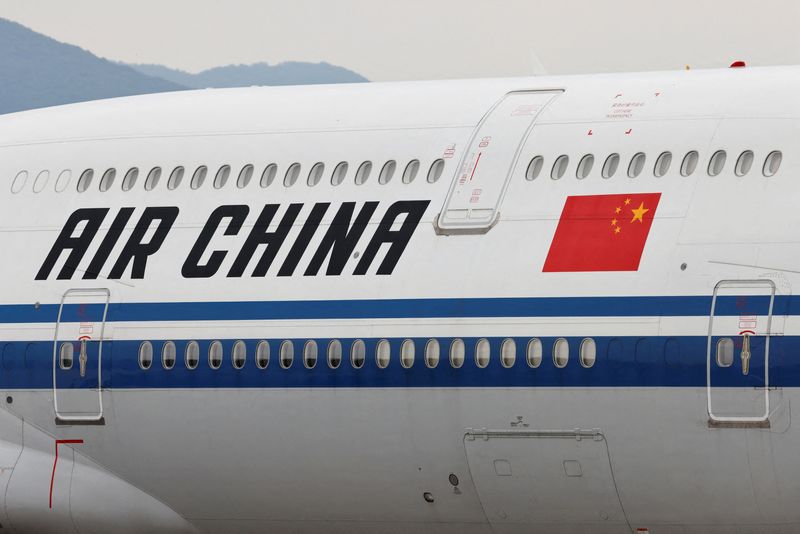
BEIJING/SEOUL (Reuters) -China's two largest airlines narrowed their first-half losses but remained firmly in the red as a capacity surplus kept fares low, earnings reports released on Thursday showed, underscoring the fragility of the sector's post-pandemic recovery.
Flagship carrier Air China reported a net loss of 1.8 billion yuan ($252 million) for the six months to June, 35% lower than the loss of 2.78 billion yuan a year earlier.
Guangzhou-based China Southern Airlines recorded a loss of 1.5 billion yuan, 64% less than the 4.21 billion yuan loss in the same period in 2024.
The carriers have blamed losses on imbalanced supply and demand, more price-sensitive travellers and competition from China's ever-expanding high-speed rail network. Geopolitical uncertainty and a slow rebound in premium international traffic have also hurt revenues.
Summer usually offers relief for airlines. Schools start holidays in early July, kicking off a peak season that often delivers two months of bumper sales. Yet as of August 24, the average fare for domestic tickets with departure dates in July and August is 788 yuan, or about $110, down 3.7% from last year and 10.6% below 2019 levels, according to aviation data provider Flight Master.
International capacity has returned to 93% of pre-COVID levels, but analysts say yields remain low.
Li Hanming, a U.S.-based independent aviation analyst, said the second half of the year would remain challenging for China's three major airlines.
"The underlying issues remain unresolved," Li said. "Due to the absence of long-haul intercontinental flights, mostly to North America, China is facing significant oversupply and fierce competition on her domestic and short-haul, intra-APAC international flights."
While global carriers have clawed back to profitability, China's big three are still bleeding red ink, leaving them the laggards of the post-COVID rebound.
China Eastern Airlines is due to report on Friday. The Shanghai-based carrier delivered a profit warning last month, forecasting a first-half deficit of 1.2 to 1.6 billion yuan versus a loss of 2.77 billion yuan last year.
Adding to China Eastern's woes, the Communist Party's anti-graft watchdog announced in June that former chairman Liu Shaoyong was under investigation for "serious violations". It did not provide further details of the allegations.
China Eastern has not commented on the allegations.
Liu, who led the airline from 2009 until 2022, was in charge at the time of the crash of flight MU5735 that killed 132 people in March 2022. China's aviation regulator has still not released a final report into the cause of the crash, which revived scrutiny of corporate governance across the sector.
($1 = 7.1529 Chinese yuan renminbi)
(Reporting by Sophie Yu in Beijing and Lisa Barrington in Seoul. Editing by Jamie Freed)

 Reuters US Business
Reuters US Business
 Associated Press US News
Associated Press US News KSNB Local4 Central Nebraska
KSNB Local4 Central Nebraska Reuters US Top
Reuters US Top New York Post
New York Post The Travel
The Travel Florida Today
Florida Today The Daily Beast
The Daily Beast CNN Health
CNN Health AlterNet
AlterNet